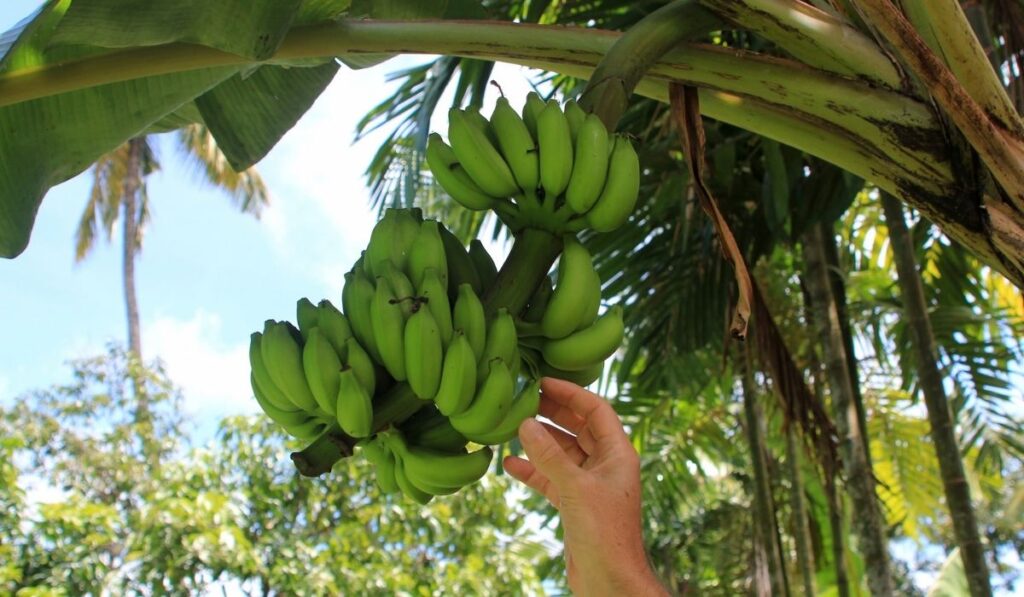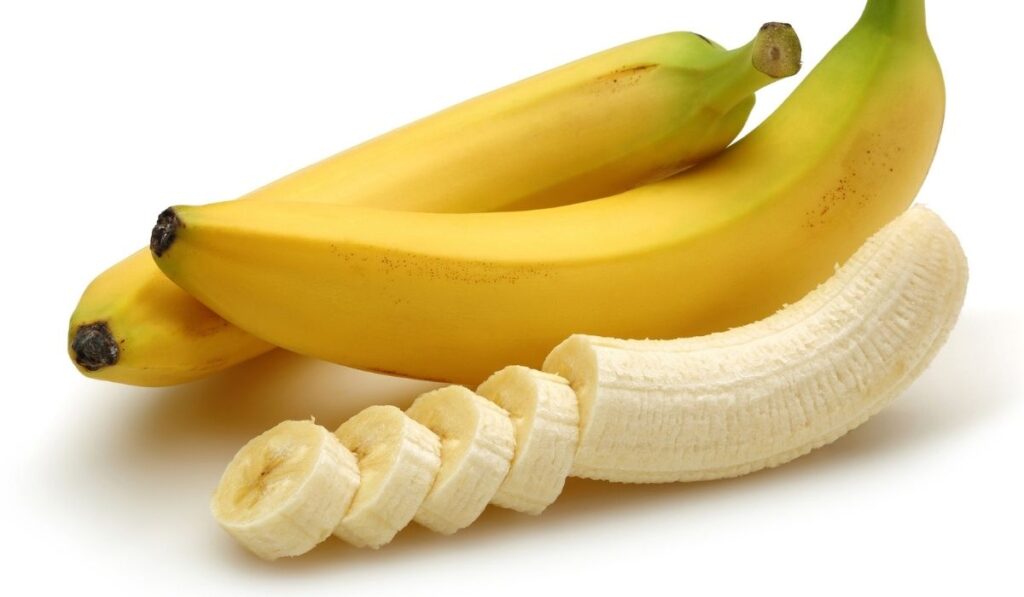Bananas are among the oldest and most popular fruits in the world. This tasty fruit packs lots of nutrients and minerals, which help with heart health, digestion, asthma, blood pressure, and skin health. But when’s the best time of year to enjoy bananas?
Bananas are in season year round because the growing conditions allow for planting and harvesting in at least some part of the world all of the time. Growers also stagger planting seasons to guarantee supply throughout the year. Dried banana chips are great if you don’t have access to fresh fruit.
Bananas are extremely versatile. They can be eaten raw or enjoyed in breads, pancakes, ice cream, cookies, salads, smoothies, and chips. To make the most out of this delicious and healthy fruit, let’s learn more about banana growing, the banana season, and how to choose a ripe banana.
Where Are Bananas Grown?

Bananas are native to Southeast Asia, but the green fruit now grows in tropical regions across the world. The fruit is cheap, readily available, and a great source of nutrients, making it a popular culinary delight all over the world. These days, bananas on the market come from over 150 countries in South/Central America, Asia, and Africa.
Latin America is the most dominant banana growing region and is a top exporter to North America, Europe, Russia, and China. Within the region, Ecuador is the world’s largest banana exporter.
Other top banana producers in Latin America include Costa Rica, Guatemala, Colombia, Panama, and Honduras. Most of the banana farms in Latin America are large-scale plantations.
Other top banana growing countries include India, China, Brazil, Angola, the Philippines, Dominican Republic, Indonesia, Tanzania, Mexico, Vietnam, Rwanda, Kenya, Papua New Guinea, and Côte d’Ivoire.
Banana production in most countries is a blend of small/medium-scale farms and large-scale plantations owned by private corporations or the state.
When Are Bananas in Season?
Bananas are in season throughout the year. The fruit grows in tropical regions that are moist and boast rich soils. These conditions are perfect for banana growing every month of the year. Bananas take about 9 months to 12 months from planting to harvesting.
With growing conditions allowing planting every month of the year, you’ll always find your favorite fruit in the market. The largest producers in different countries stagger the banana growing time to guarantee they have ready fruits for harvest at different times of the year.
Whether you want to enjoy cool, healthy banana smoothies in summer or delicious banana cakes in winter, it shouldn’t be a problem. There’s always banana harvesting going on, which makes this one of the most readily available fruits in the world.
But, you know sometimes the grocery store just doesn’t deliver (metaphorically and/or literally) so you may be in the market for some kind of shelf-stable option. Dried banana chips like this option (on Amazon) are a great healthy snack, and enable you to enjoy bananas even if you don’t have access to the fresh fruit.
The Banana Tree Cycle
The banana tree is actually a perennial herb that can grow up to 15 meters. This is the largest perennial herb and has over 1,000 varieties divided into groups.
The banana plant grows from a bulb/rhizome that takes about 9 months to a year to produce mature fruit for harvesting. Bananas do well in warm weather with high humidity levels and long periods of rainfall.
Here’s a breakdown of the banana plant cycle up to harvesting:
- Planting: Planting of the bulb/rhizome is the first stage of the banana tree cycle.
- Vegetative development: For about 6 months, the banana plant develops pseudo-stems supporting the plant and leaves.
- Flowering: Female flowers wrapped by a large purple/green bract develop first. The bract sheds and male flowers develop. This takes about 3 months.
- Fruiting: After blooming, the plant starts producing fruits that take about 3 months to mature fully. The fruits grow in large bunches with multiple rows of bananas (hands).
Once the fruits are ready, harvesting starts with the farmer cutting the mother plant down. Other suckers develop from the mother plant and go through the same tree cycle. The mother plant is also a source of suckers for expanding the banana farm/plantation.
How to Tell When a Banana Is Ripe

If you want to enjoy the maximum health benefits of bananas, first learn how to choose the ripe ones. Eating under or over-ripe bananas can cause digestive problems and the taste won’t be as desired.
Here are some tips to tell when a banana is ripe:
- Look for brown spots on the skin. However, avoid bananas with black spots; those are signs of bruises.
- Squeeze the banana gently and if it feels soft, you have a ripe fruit. Avoid bananas that are mushy.
- Check the stem and confirm there’s no green color; it’s a sign that the banana is still ripening.
- Try peeling the banana and if the peel comes off easily, it’s ready to use.
- Listen to any noise as you peel and if there’s barely any sound, you’ve got a ripe banana. If you notice some sound when starting to peel, save the banana for later.
Don’t just look at the color of your bananas to choose a ripe one. A yellow banana can still be underripe and might have some unpleasant taste.
